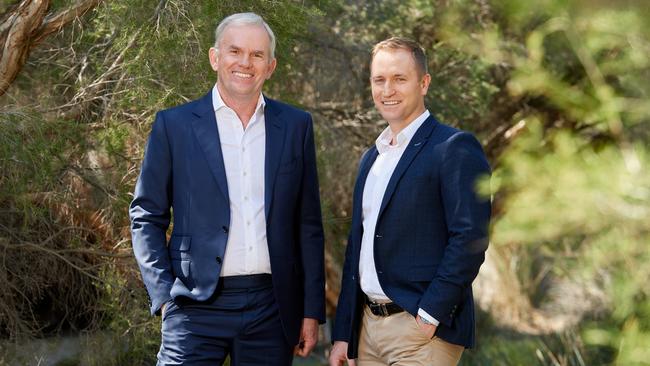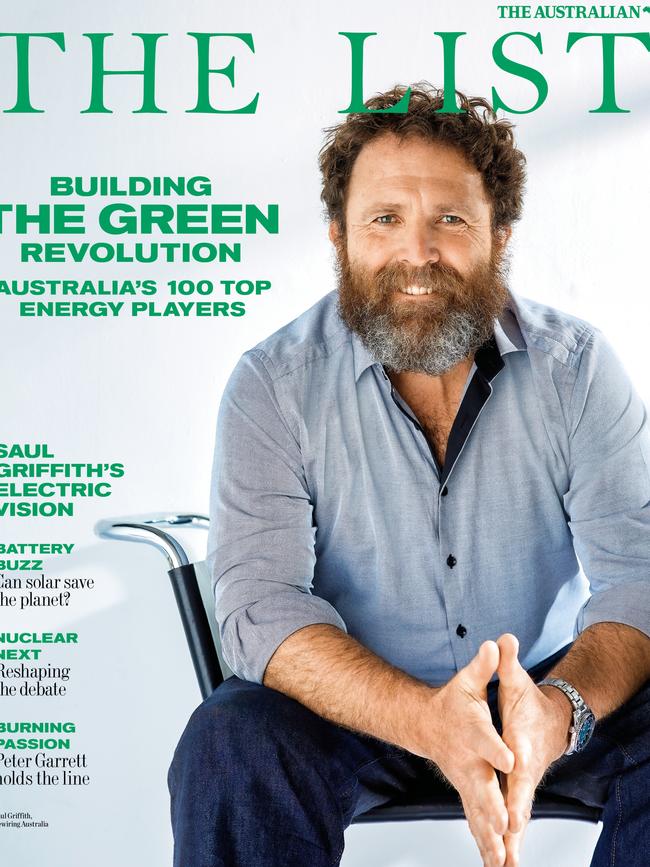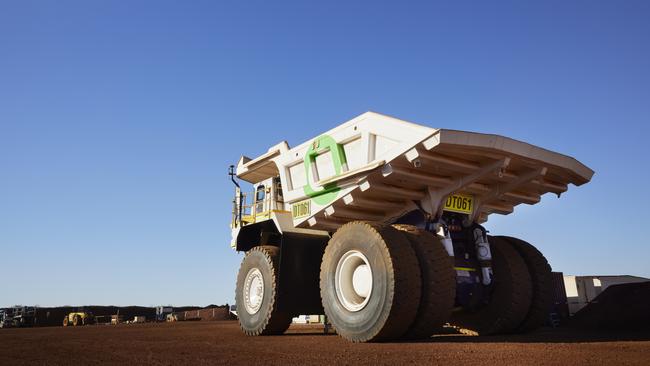Miners continue quest to electrify heavy haulage trucks with new tech to speed up charging
The key to Fortescue electrifying its haul fleet lies in the purchase of an F1 team offshoot where tech like charging trucks in seconds is ‘just the beginning’.

Electric vehicles might still be a green badge of honour in our cities but, at Twiggy Forrest’s Pilbara operations, they’re part of a revolution helping to transform Australia’s mining sites. Those pictures of giant, diesel-hungry haul trucks and trains that have defined the nation’s mining sector for decades may soon be consigned to the history books as resource companies go electric.
Fortescue, for example, is in the process of purchasing 360 autonomous battery-electric trucks, 55 electric excavators and 60 battery-powered dozers as it joins other big miners, such as BHP, in a bid to solve the sector’s dependency on diesel. But it’s an expensive transition and with upfront capital costs up to double that of diesel, some players in the mining sector are looking for government help.

This is an article from The List: 100 Top Energy Players 2024, which is announced in full on November 22.
In a recent report, the Electric Mine Consortium, which counted South32, Barminco, IGO and Sandfire as members, called for tax incentives to help drive mine electrification, arguing it could reduce operating costs to 56-88 per cent of the diesel-powered equivalent. The report says there were significant financial and health and safety benefits from going electric, but the cost was a deterrent. Only 60 per cent of Australian miners say they will transition to electric power in their next development.
The report says high capital cost is the primary barrier to adopting electric equipment for 76 per cent of miners surveyed, while 50 per cent lack confidence in its operational effectiveness. “Across the Australian industry, there is a clear consensus that the major barriers to progress are the capital cost and the confidence in new electric equipment,” the report says.
Capital tax incentives – such as Canada’s 30 per cent investment tax credit and its accelerated capital cost allowance which allows faster depreciation – would help, according to the report.

It also notes that Australia’s diesel tax credit will cost taxpayers $37bn from 2024-30 but, not surprisingly, with such industry dependence on diesel, it stops short of arguing for its removal.
Despite the costs, the big miners are increasingly talking up their commitment to dump diesel, and some are developing radical technology solutions as part of the transition. BHP, for example, will trial a new energy transfer system in its Caterpillar vehicles at its Jimblebar and Escondida sites. The dynamic energy transfer system converts energy from the mine site’s power source, uses an electrified rail system to transfer the energy to the truck, and a machine system to transfer the energy to the truck’s powertrain.
Caterpillar, one of the world’s biggest suppliers of diesel-powered heavy vehicles, says the rail system is a “highly deployable, mobile solution that can be customised to customers’ specific site layouts”.
BHP plans to source 500MW of renewable power and storage in the Pilbara by 2030 and says it will have its first all-electric truck fleet operating before the end of the decade. The global miner says it is on track to deliver “at least” a 30 per cent reduction in scope 1 and 2 greenhouse gas emissions by 2030 against a 2020 baseline, and has maintained its aspirational target to be net zero by 2050.

Fortescue, meanwhile, has signed a $US2.8bn ($4.2bn) deal with German truck manufacturer Liebherr, which aims to convert two-thirds of its mining fleet to zero-emissions battery technology over the next couple of years.
Part of the Fortescue push has its genesis in Formula 1 technology: two years ago, the miner bought Williams Advanced Engineering, an offshoot of the legendary F1 team founded by the late Sir Frank Williams. The company’s battery technology will play a key role in enabling Fortescue to electrify its haul fleet, with rapid charging at the core of its strategy. The fast-charging F1 technology can charge a haul truck in 30 minutes, providing six hours of run-time, and Fortescue chief executive Dino Otranto says that while that’s impressive, it’s just the beginning.
“We’ve got a concept called boost charging in the works, which could bring the current charging time of minutes down to seconds,” says Otranto. “That will unlock even further productivity increases. As it stands, the first generation charger and power system combination is already a better offering than its diesel equivalent in the market.’’
The deal with Liebherr builds on a 2022 purchase of 120 haul trucks from the German company.
The problem of heavy haul vehicles queued for charging is an issue for the miners, but Fortescue will use a robotic charging system, which, combined with the fast charging times and autonomous vehicle operation, is designed to solve that issue.
Four autonomous trucks are now being checked at Fortescue’s testing site, with the first deployment on site expected in the first quarter of 2025 with validation of the complete autonomous battery-electric solution expected in early 2026. Fortescue also aims to sell its technology to other companies in the mining sector, once it has been proved up.
In its 2024 Global Metals and Mining Outlook, KPMG said the resources sector would have to pull off a remarkable feat in coming years – both dramatically reducing its carbon footprint while increasing minerals output.
“Global demand for minerals indispensable to a low-carbon economy, such as copper, lithium, cobalt, nickel and graphite, is expected to increase fourfold by 2040,’’ the professional services firm said. “At the same time, metals and mining companies are highly carbon intensive. The mining industry accounts for two to three per cent of global carbon emissions and metals production comprises an additional eight to 10 per cent. Combined, metals and mining are responsible for more than half of greenhouse gas emissions from global industry.”




To join the conversation, please log in. Don't have an account? Register
Join the conversation, you are commenting as Logout